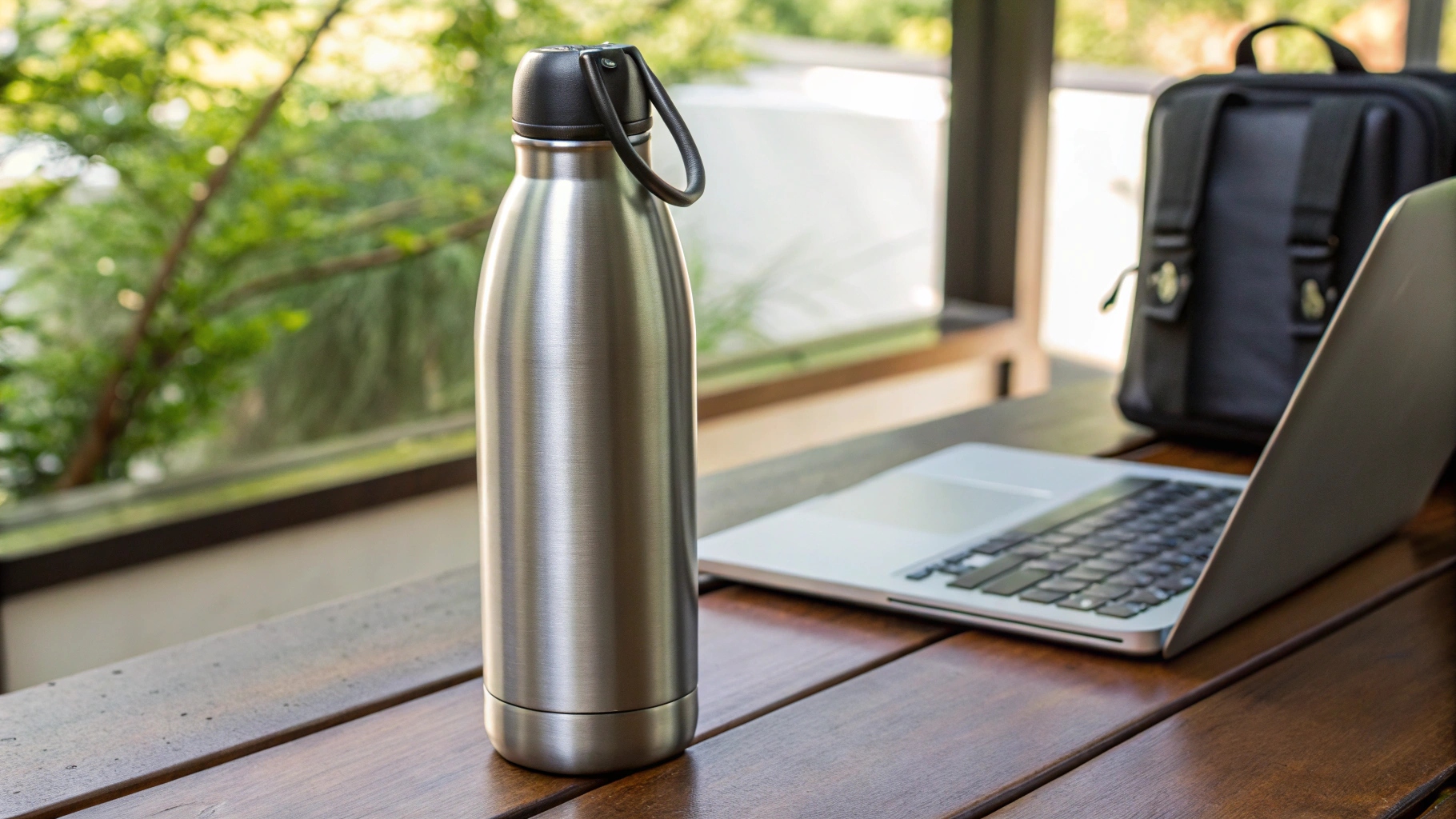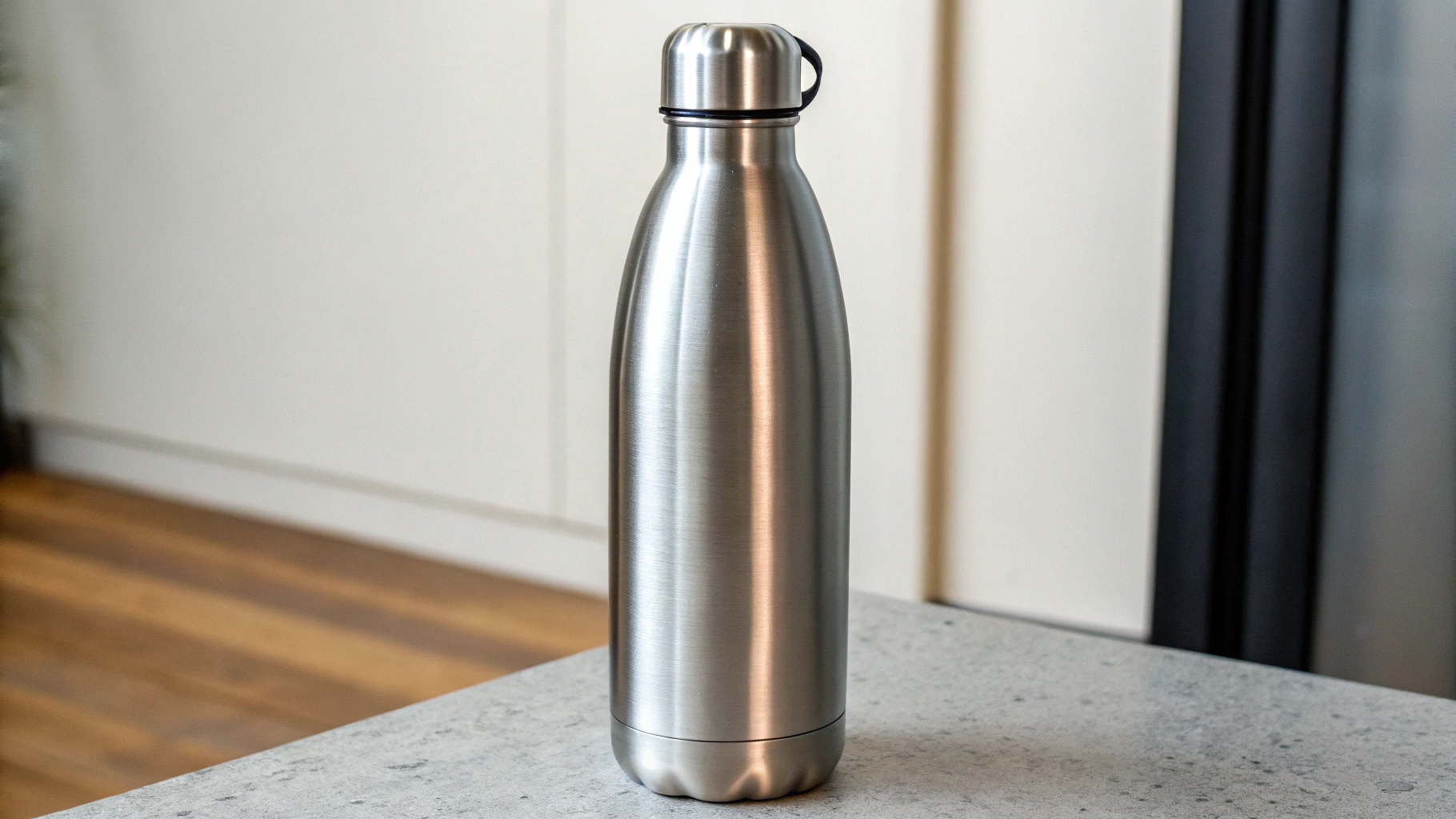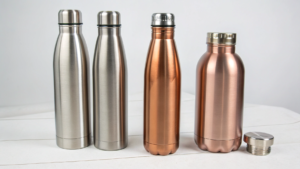What are the Safest Materials for Kids' Water Bottles?
Worried about harmful chemicals in your child's drink bottle? Finding truly safe, non-toxic options can feel overwhelming. Choose materials tested for safety and durability for peace of mind.
The safest materials for kids' water bottles are generally food-grade stainless steel (like 18/8 or 304), BPA-free plastics such as Tritan, and food-grade silicone, often used for spouts and seals. These materials are non-toxic, durable, and don't leach harmful substances.
Choosing the right water bottle for kids isn't just about fun designs. As someone who's sourced countless bottles for family-focused campaigns and schools through Latitude Experience, safety is the number one priority parents and clients ask about. It’s crucial to understand the materials touching your child’s drink daily. Let's break down the options and see which materials really stand up to the test for safety, durability, and everyday use. This ensures the promotional gift is not just seen, but trusted.
What is the best material for a kids water bottle?
Confused by all the choices for kids' bottles? You want something tough enough for playtime, light enough to carry, and completely safe. Finding the perfect balance is key.
Food-grade stainless steel and high-quality BPA-free Tritan plastic1 are often considered the best. Stainless steel is very durable and keeps drinks cold, while Tritan is lighter and shatterproof, making both excellent choices depending on specific needs.
When I work with clients like Jacky who might be planning a family day event or a campaign targeting parents, the "best" bottle often comes down to the specific age group and intended use. A younger child might need something lighter like Tritan, while an older kid involved in sports might benefit from the insulation and ruggedness of stainless steel. Both are great, safe choices, but they serve slightly different needs.
Comparing Top Materials for Kids
Let's look closer at the two leading options:
- Food-Grade Stainless Steel (18/8 or 304):
- Durability: Extremely tough, resistant to drops and dents (though it can dent). It lasts a very long time.
- Safety: Naturally BPA-free, no risk of chemical leaching, doesn't retain flavors or odors.
- Weight: Heavier than plastic, which might be a factor for very young children.
- Insulation: Often available with double-wall vacuum insulation, keeping drinks cold or warm for hours – great for school lunches or hot days.
- Cleaning: Non-porous surface makes it hygienic and easy to clean. Usually dishwasher safe (check manufacturer guidance).
- BPA-Free Tritan Plastic:
- Durability: Very impact-resistant, shatterproof, making it safer than regular plastic or glass if dropped.
- Safety: Contains no BPA, BPS, or other harmful bisphenols. It's clear, stable, and doesn't impart taste.
- Weight: Much lighter than stainless steel, easy for kids of all ages to handle.
- Insulation: Poor insulation properties; drinks won't stay cold or hot for long.
- Cleaning: Generally dishwasher safe (top rack recommended) and resists stains and odors well compared to cheaper plastics.
Ultimately, the "best" choice depends on prioritizing factors like weight, insulation, or sheer ruggedness. Both offer excellent safety profiles.
What is the best material for everyday water bottles?
Need a bottle that survives daily use? From commuting to workouts to sitting on a desk, it needs to be reliable, safe, and easy to handle day after day.
For general everyday use, food-grade stainless steel2 is often preferred. Its durability, temperature retention (if insulated), lack of chemical leaching, and resistance to odors make it highly practical and long-lasting.

Thinking about Jacky's role as a Marketing Manager, he needs gifts that reflect well on the brand over the long term. An everyday bottle needs to perform consistently. While Tritan is a strong contender for its lightness and clarity, stainless steel often wins for adult daily use because of its robustness and ability to keep drinks at the desired temperature throughout the workday or commute. It feels substantial and conveys quality.
Factors Making a Material Great for Daily Use
What makes a material suitable for the daily grind?
- Durability: Can it handle bumps, drops, and being tossed in a bag repeatedly? Stainless steel excels here. Tritan is also very durable and shatterproof.
- Safety & Taste Neutrality: Will it leach chemicals or affect the taste of water after hours of sitting? Both stainless steel and Tritan are excellent in this regard, being non-toxic and non-reactive.
- Ease of Cleaning: Can it be cleaned easily to prevent buildup or odors? Stainless steel's non-porous nature is advantageous. Tritan is also generally easy to clean.
- Temperature Control: Does it keep drinks cold or hot? Insulated stainless steel is the clear winner here, a major plus for daily enjoyment.
- Weight & Portability: Is it easy to carry around? Tritan is significantly lighter. Non-insulated stainless steel is manageable, while insulated versions are heavier.
- Odor/Stain Resistance: Will it start to smell or look dingy after repeated use? Stainless steel is highly resistant. Tritan is also good but can sometimes be slightly less resistant than steel over the very long term with certain beverages.
For a reliable, long-lasting everyday bottle, especially for corporate branding where perceived value matters, stainless steel often ticks the most boxes.
What is the most hygienic material3 for a water bottle?
Worried about germs or weird smells lingering in your water bottle? Cleanliness is crucial, especially for something you drink from constantly. Some materials are simply easier to keep hygienic.
Food-grade stainless steel is widely considered the most hygienic material. Its non-porous surface strongly resists bacteria growth, doesn't harbor odors or flavors, and can be easily cleaned and even sterilized.

Hygiene is a major concern I hear, particularly with kids' bottles or items used frequently in shared environments like offices. Nobody wants a bottle that's hard to clean or starts smelling funky. This is where stainless steel truly shines. Its smooth, inert surface gives bacteria very little purchase.
Why Stainless Steel Leads in Hygiene
The hygienic properties of stainless steel stem directly from its physical characteristics:
- Non-Porous Surface: Unlike plastics which can develop microscopic scratches or pores where bacteria can hide, stainless steel offers a smooth, solid surface. This makes it harder for germs, mold, and biofilms to adhere and grow.
- Resistance to Corrosion and Stains: It doesn't rust or easily stain, meaning the surface integrity remains intact and easy to clean over time.
- No Flavor/Odor Retention: Stainless steel doesn't absorb flavors or smells from previous drinks (like coffee or juice). A quick wash typically restores it to a neutral state. Some plastics, even Tritan to a lesser extent over time, can sometimes retain faint odors.
- Ease of Sterilization: Stainless steel can withstand high temperatures, allowing for thorough sterilization with boiling water or high-heat dishwasher cycles if needed, without degrading the material.
While glass is also non-porous and hygienic, its fragility makes it less practical for kids or everyday carry. Silicone, often used for spouts, is generally hygienic but can sometimes retain oils or strong smells if not washed thoroughly. For the main body of a bottle focused purely on hygiene, stainless steel is the top performer.
Conclusion
For kids' water bottles, safety is paramount. Stick to food-grade stainless steel, BPA-free Tritan, or silicone components. These materials offer the best combination of non-toxicity, durability, and ease of cleaning for happy, healthy hydration.
-
Learn about BPA-free Tritan plastic, its safety features, and why it's a popular choice for children's water bottles. ↩
-
Explore the advantages of food-grade stainless steel, known for its durability and safety, making it ideal for children's hydration needs. ↩
-
Discover the key factors that contribute to a material's hygiene, ensuring safe drinking for kids and adults alike. ↩





